The United States government, led by President Joe Biden at the time this article has published, pledges to provide additional military hardware to the Philippines as part of the modernization of alliances between both nations.
This development comes as the leadership in the United States government reassures their Philippine counterparts that the bilateral defense relations are 'ironclad' and they are committed to support the Philippines to its modernization, on top of the ones funded by the country's annual budget as prescribed by the Revised AFP Modernization Program.
DISCUSSION OVERVIEW
 |
The United States sets to provide at least Island-class Patrol Boats to the Philippines.
Image Source. |
The Philippines and the United States, at the first half of the year 2023, comes at the fast pace as its alliance under the Mutual Defense Treaty sets to get further enhanced, modernized, and adopt to the current challenges that currently existing in the Indo-Pacific region, especially in dealing with a regional superpower like China that still employs intimidation and salami slicing tactics as a way for this country to achieve its entire grand scheme of things, namely its control over the entire West Philippine Sea area.
First area of development regarding this ever-improving alliance is the introduction of additional military sites allowed under the Enhanced Defense Cooperation Agreement or EDCA, whereby four (4) of these sites has added recently, which are Naval Base Camilo Osias in Santa Ana, Cagayan, Camp Melchor Dela Cruz in Gamu, Isabela, Balabac Island in Palawan, and Lal-lo Airport in Cagayan.
Second is the recently concluded Exercise Balikatan 2023, whereby the United States Armed Forces and their Philippine counterparts played a role in conducting various simulation activities that test the interoperability of both countries such as the ones regarding the sinking of a simulated enemy vessel off the coast of Zambales in the West Philippine Sea, as the military forces that took part in the activity take their opportunity in getting the vessel, formerly the BRP Pangasinan, sank in this activity.
Third is the 2+2 ministerial dialogue meeting that took place in the United States capital city of Washington, D.C. in the early weeks of April 2023, whereby the secretaries of defense and foreign affairs from both countries met together, with the joint statement released recognizing the importance of the alliance at this day and age. Add to this is the recognition of giving importance to the needs of the Philippine military, from the $100 Million Foreign Military Financing to the fast-tracking discussions of the Philippines' acquisition plan of getting multirole fighters (giving F-16 Vipers offered by Lockheed Martin the leverage under this project).
Fourth and the most recent one at this point this article has published, was the visit of the Philippine President Ferdinand Marcos Jr., to Washington D.C., whereby he met with his U.S. counterpart Joe Biden and also together with the leadership of the military, as the current Secretary of Defense in the United States Lloyd Austin and the President of the United States assured the Philippine government that the alliances of both nations is 'ironclad', as the country sets to provide its pledges of transfer to the Philippines.
In the visit made by the Philippine President to the United States, their counterparts in the United States government pledge to transfer three (3) C-130H Hercules cargo aircraft variant, two (2) Marine Protector-class Patrol Boats from the United States Coast Guard, and two (2) Island-class Patrol Boats, still from the United States Coast Guard, of which all the patrol boats mentioned may more likely go to the Philippine Navy.
As these two different classes of patrol boats from the United States count as a new entrant to the Philippine Navy fleet, the pledge of transfer made by the United States, on top of the recently transferred two units of Cyclone-class patrol crafts from the United States Navy (ex-USS Monsoon PC-4 and ex-USS Chinook PC-9), it is interesting to deal in discussing the said two classes of patrol boats from the United States Coast Guard as it comes with its own origin, specification, and capabilities.
ADDITIONAL INFORMATION ON THE SHIPBUILDER
 |
One of Bollinger shipyard's facilities in New Orleans.
Image Source. |
While we have a portion of information regarding the shipbuilder on another article regarding the
BRP Mariano Alvarez, it is an interesting fact that all the patrol boats that the United States government pledges to turned over to the Philippine Navy, on top of the additional Cyclone-class patrol vessels that will supplement BRP Mariano Alvarez, are all built by this shipbuilder in the United States named
Bollinger Shipyards, which itself is notable in providing such small-sized vessels to both the needs of the United States Navy and Coast Guard.
Summarizing this information, Bollinger Shipyards has 14 shipyards, with 42 dry docks at its disposal, and its main office is headquartered in Lockport, in the state of Louisiana, United States. Since the company’s inception in 1946, it continuously provides both shipbuilding and repair services for main contractors from both government and civilian sectors, ranging from fishing vessels and barges to littoral vessels like the Island-class and Marine protector-class coast guard patrol vessels.
Its current vessel in production for the United States Coast Guard is the Sentinel-class Fast Response Cutter, the newest class in the line of white-hulled vessels of one of the United States military’s service branches in which it has sought as a replacement for the aging Island-class vessels that two units of it comes as part of the pledge of transfer that the United States government provided to the Philippines, aside from the Marine Protector-class and the C-130H Hercules intended for the Philippine Air Force.
Aside from replacing the older Island-class 110-foot patrol boats, the
Sentinel-class fast response cutter
comes with the United States Coast Guard requirements in mind, as these newer vessels came with enhanced capability in hand with its role intended to help the maritime homeland enforcement agency to uphold its mandate in patrolling the coastal zone of the country and facilitated deterrence against suspected drug smugglers into the maritime borders of the United States, aside from search and rescue operations.
While the Bollinger Shipyards secured the contract and other facilities that the Gulf Island Shipyards turned over as they exited the shipbuilding market, another contract of the Navajo-class Towing Salvage and Rescue ship has awarded to Austal Shipyards USA, whereby the United States Navy exercised its option to add two more vessels for such type for its fleet as it meets the specifications as required the end-user, while the construction of the vessels starts at the latter part of 2023 and first half of 2024, with a delivery timeline slated by year 2025.
Bollinger Shipyards’ production of both old and new vessels serves not only as an integral part of improving the present capabilities of both the United States Navy and the United States Coast Guard, but it has also contributed indirectly to the development of maritime security capabilities of other countries like the Philippines, as the United States government provides transfer of military hardware like the Cyclone-class and the two classes of former United States Coast Guard patrol boats that the Philippine Navy sets to receive.
THE ISLAND-CLASS PATROL BOATS
DEVELOPMENT HISTORY, OPERATIONS, AND CURRENT USERS
 |
The Georgian Coast Guard also operates some Island-class patrol boats from the United States.
Image Source. |
Before the patrol vessels even replaced by the newer Sentinel-class fast response cutter built by the same shipyard as the Island-class, the Island-class patrol vessels themselves count as one of the mainstay white-hulled platform of the United States Coast Guard, in the same manner with its other mainstay vessels that go beyond littoral waters as the Hamilton-class High Endurance Cutters, even before it has replaced by the newer Legend-class cutters.
Like the Sentinel-class that the United States Coast Guard bought as part of its ongoing modernization and replacement for the aging Island-class patrol boats, these Island-class patrol boats came as an idea in the early 1980s as it intends to replace the older Point-class cutter and Cape-class cutters that have served within this maritime law enforcement organization, as the design requirements of the United States Coast Guard comes with its mandate in mind, alongside search and rescue operations.
In early 1984, the United States Coast Guard started a program that would give inception of what we all know today as the Island-class patrol boats, whereby 16 initial units were first awarded first to Marine Power and Equipment Company. Except that the same contract ended up getting awarded again later to Bollinger Shipyards, after the first award was voided by a United States district court, with procurement irregularities being the cause. It took Bollinger at least two years before the first vessel, USCGC Farallon (WPB-1301), entered active service in February 1986.
Another notable potential user of the Island-class patrol boats, aside from the Philippine Navy itself, is the Mediterranean country of Greece with its Hellenic Navy, wherein they are slated to receive at least four (4) units of the Island-class, while such ships may undertake some upgrade processes prior to its entry into Hellenic Naval fleet service. Adding up to the roster of users of the Island-class patrol boats is the Central American country of Costa Rica, as they also get a pair of such ships from the United States government, intended for operations within the Costa Rican Coast Guard.
Once approved, the Philippine Navy will join the said aforementioned users regarding to the number of end-users for the Island-class patrol boats, and from thereon, it comes with the possibility that the United States government may grant additional such class of patrol vessels later on, but that remains to be seen as the Philippine Navy may also possess additional patrol boats of its own, such as the Acero-class Fast Attack Interdiction Crafts that are derived from Shaldag Mk. V crafts of the Israel Shipyards Ltd.
THE ISLAND-CLASS PATROL BOATS SPECIFICATIONS
 |
Detailed specifications of the Island-class patrol boats.
Image Source. |
For those who rely on the metric system as a way of measuring things, just like here in the Philippines, let us take note that the Overall length of the Island-class patrol boats of the United States Coast Guard comes with the length of 33.53 meters, a beam of at least 6.40 meters, and a draft of 2.23 meters, which is befitting for a patrol boat that is slightly smaller than the Philippine Coast Guard’s Ilocos-class patrol boats, which on another note comes at around 35 meters long and 6.7 meters beam designed and produced by Tenix, an Australian defense firm.
Another comparison that the Island-class patrols can go with is the Philippine Navy’s newly bought Acero-class Fast Attack Interdiction Crafts, Shaldag Mk. V-derived vessels that are designed by Israel Shipyards Ltd., and has dimensions almost similar to the Island-class patrol boats offered by the United States government under the recent arrangement, such as having an overall length of 32.65 meters, a beam of 6.20 meters, and has a lighter displacement of 95 tons and having twice the maximum speed, which is at around 40+knots.
This means that while the Acero-class Fast Attack Interdiction Crafts comes with a similar size and better speeds than the Island-class patrol boats have, what the latter has in advantage comes in terms of its overall range, as the Shaldag Mk. V design that the Acero-class Fast Attack Interdiction Crafts of the Philippine Navy currently possess only comes with a maximum range of 1,000 nautical miles, at 12 knots cruising speed of the vessel, which is two to three times less than this type of vessel pledged by the United States government.
On another note, the Island-class patrol boat’s replacement, the Sentinel-class Fast Response Cutter, comes with a length of 46.93 meters and a beam of 7.74 meters, basically making it larger than the Island-class patrol boats in terms of size and slightly larger than the Philippine Coast Guard’s 44-meter Parola-class Multirole Response Vessels that patrol crucial areas like the West Philippine Sea. With size comes the increase of crew designated onboard, as a single Sentinel-class Fast Response Cutter comes with at least 22 crew onboard, as opposed to the Island-class patrol boat’s capacity of 18 crew.
Given the specifications provided, one can really say that the Island-class patrol boats come decently, especially regarding to littoral area of operations as it augments the Acero-class Fast Attack Interdiction Crafts of the Philippine Navy, adding the number of active vessels that can conduct increased maritime presence and patrol operations in territorial waters alongside their counterparts in the Philippine Coast Guard while lessening the stress for more capable vessels that are needed in the country’s Exclusive Economic Zone waters.
As the idea of adding more Island-class patrol boats to the Philippine Navy may not be that far later on, depending on the decisions of the higher leadership citing logistical standpoints, another pair of vessels from different class offered by the United States through its pledge may come with similar prospects eventually, providing more naval assets intended for littoral patrols. Coming on to the next part of this discussion is the Marine Protector-class Patrol Boat.
THE MARINE PROCTECTOR-CLASS PATROL BOATS
DEVELOPMENT HISTORY, OPERATIONS, AND CURRENT USERS
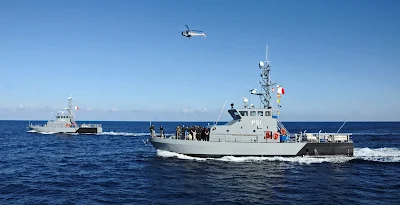 |
Armed Forces of Malta’s Protector-class Coastal Patrol Boats, a derivative of the Marine Protector-class of the United States Coast Guard.
Via Wikimedia Commons |
The Marine Protector-class patrol boats of the United States Coast Guard come as a smaller vessel compared to the Island-class patrol boats also offered by the United States government as part of its pledge to the Philippine government, although like its larger peers the Marine Protector-class comes with many units at hand, and comes with a similar pipeline that it may get replaced eventually with the aforementioned Sentinel-class Fast Response Cutters.
Like the Island-class patrol boats that have come along with these smaller Marine Protector-class vessels, it comes as a replacement and an improvement over the Point-class vessels, which are far smaller than what the Marine Protector-class already is, while its capabilities came with sea-keeping abilities, enhanced habitability for its crew onboard and environmental law compliance in mind as it comes with the United States Coast Guard’s mandate in mind in deterring drug interdiction and conducting search and rescue operations.
Before the idea of having two of the Marine Protector-class patrol boats handed over to the Philippine Navy as part of the pledge made by the United States came to mind, the United States Coast Guard has already handed over several vessels under this type to other countries, one of which being Uruguay, where they received three Marine protector-class vessels namely the USCGC Albacore, USCGC Cochito, and USCGC Gannet, as the transferred has made through Excess Defense Articles.
The first 50-unit order set by the United States Coast Guard for the Marine Protector-class patrol boats made by Bollinger Shipyards, the one who produced the Island-class and Cyclone-class patrol crafts as mentioned before in this article, took place in 1998, making the first-commissioned vessels of this type a decade younger than the Island-class patrol boats that have first conceptualized in the mid-1980s, and since then increased into the 73-unit fleet it comprises at its peak before any foreign military transfers took place.
The Marine Protector-class patrol boats offered by the United States government in their pledge present an opportunity for the Philippine Navy to get more vessels of such type at their discretion later on, as this option will help improve not only with the number of vessels that the naval branch uses but also increases the efficiency in terms of logistics chain as bulk purchases of spare parts ensures the effectiveness of its routine maintenance as part of its continuous operational prospects throughout its serviceable life.
THE MARINE PROTECTOR-CLASS PATROL BOATS SPECIFICATIONS
 |
This is one of the Marine Protector-class patrol boats of the United States Coast Guard.
Image Source. |
The Marine Protector-class patrol boats come with the following dimensions, with a length of 26.52 meters, beam or width of 5.91 meters, draught of 1.71 meters, and a displacement of 102 tons. It has a maximum range of 900 nautical miles, making it capable of going beyond its littoral capabilities, sufficiently conducting patrols in contested areas like the West Philippine Sea whenever needed. 10 personnel is the maximum number of crew that the Marine Protector-class patrol boats are capable of.
Its size comes smaller than both the Island-class patrol boats and the Shaldag Mk. V-based Acero-class Fast Attack Interdiction Crafts, although these vessels are larger than the Philippine Navy’s fleet of Multipurpose Assault Crafts or MPACs, a joint project by the Philippine local marine firm Propmech, together with the Taiwanese firm Lung Teh. The fleet of multipurpose attack craft produced for the Philippine Navy comes with a length of 15 meters, a beam of 4.76 meters, and a draft of 0.92 meters.
There is also the correlation between the size of both the Marine Protector-class patrol vessels and the aforementioned Multipurpose Assault Crafts or MPACs, especially regarding to each of the vessel’s overall performance, whereby the former comes with a speed of 25 knots and the range of 900 nautical miles, while the latter comes at the speed of 40 knots and while only having a limited range of 650 kilometers or 350.97 nautical miles in overall range.
As seen in the image provided, a Marine Protector-class patrol boat comes with armaments, specifically two units of 0.50 caliber (12.7mm) Browning M2 Heavy Machine Guns, a type of weaponry available within the Armed Forces of the Philippines and have currently widely used by multiple armed forces across the world, including the United States military. Speaking of Browning M2 Heavy Machine Guns, there is a prototype development in collaboration between the Philippine Navy and the Department of Science and Technology or DOST regarding an automated gun mount using the said heavy machine gun, with the project named “Project Buhawi”.
Another thing to consider regarding the specifications that define the Marine Protector-class patrol boats of the United States Coast Guard is that the United States government pledged to the Philippines is the displacement of the vessels, whereby this vessel comes with at least 102 tons, being lighter than both the full-load and half-load displacement of the Island-class patrol vessels of 165 tons and 141 tons, respectively, while being heavier than the likes of the Acero-class Fast Attack Interdiction Crafts.
IN CONCLUSION
 |
C-130H variants came as another asset pledged by the United States government for transfer, aside from the two pairs of patrol boats of different types.
(c) Bruce Leibowitz, Flickr |
|
The pledge made by the United States to transfer pairs of both Island-class and Marine Protector-class patrol boats to the Philippine Navy presents an opportunity that will help increase the number of ships on its fleet, coming alongside other littoral vessels that the naval branch of the Philippine Armed Forces have such as the Shaldag Mk. V-designed Acero-class Fast Attack Interdiction Craft-Missiles and Multipurpose Assault Crafts or MPACs.
This comes on top of at least three (3) C-130H Hercules that will surely improve the overall airlifting capabilities of the Philippine Air Force, considering that this comes separately from the air service branch’s procurement of brand new C-130J-30 Super Hercules from Lockheed Martin, also comes with at least three (3) units wherein once pushing through, gives a boost of at least six air-lifters for the Philippine military in transporting both troops and equipment.
The pledged transfers comes as just one of multiple gestures that gives a signal for an improved bilateral defense relations that both the United States and the Philippines have as of recent, and there comes with the possibility that more cooperation between parties and deals may come along the way through time as the ongoing tensions made by a regional power like China in the region intensifies such as the aggression it has with Philippine vessels in the West Philippine Sea.
Once the transfer pushes through, it will be the first time for the Philippine Navy to have and operate these types of patrol boats, as it may give the leadership within the defense establishment to increase the numbers of both Island-class and Marine Protector-class patrol boats as the ones currently serving the United States Coast Guard are slowly getting replaced by the newer and more-capable Sentinel-class patrol boats, with its production focused on a shipbuilder like Bollinger Shipyards.
To sum it up, it is a welcoming development that the United States provides these military hardwares as a token of support to the Philippine Armed Forces’ modernization, although that does not mean overly relying on the alliance in order to get it done. As the Philippine Navy also set its upcoming orders of Acero-class Fast Attack Interdiction Crafts produced in-house in their facility in Cavite Yard, perhaps that approach may consider as a better one, while the U.S. transfers of Island-class and Marine Protector-class patrol boats only come as a bonus for the desires of investing into national defense.
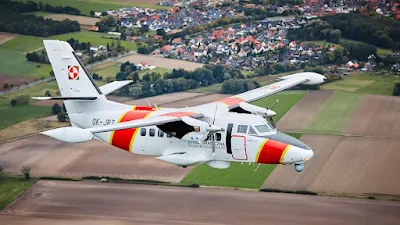


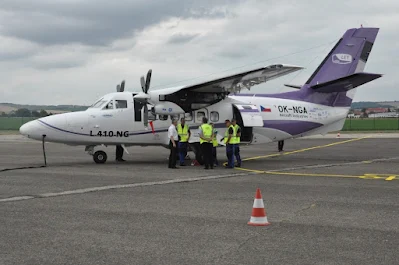

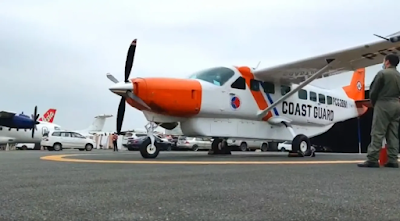
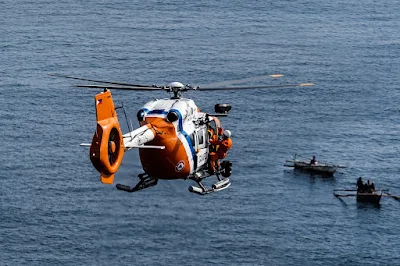






















.png)



